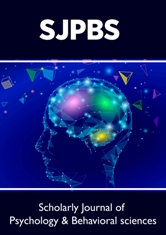
Lupine Publishers Group
Lupine Publishers
Menu
ISSN: 2641-1768
Mini Review ArticleOpen Access
Esketamine in Psychological Treatment: Potential for Abuse and Misuse Volume 8 - Issue 3
Yuxian Liu1, Edward Sun2 and Jingping Wang3*
- 1Phillips Academy, Andover, MA, USA
- 2Iolani School, Honolulu, HI, USA
- 3Department of Anesthesia, Critical Care and Pain Management, Massachusetts General Hospital, Harvard Medical School, Boston, MA, US
Received: November 08, 2024; Published: November 19, 2024
Corresponding author: Jingping Wang, Department of Anesthesia, Critical Care and Pain Management, Massachusetts General Hospital, Harvard Medical School, Boston, MA, the USA.
DOI: 10.32474/SJPBS.2024.08.000289
Abstract
Esketamine, approved for treating treatment-resistant depression (TRD) and major depressive disorder with suicidal thoughts, offers fast-acting relief but carries a significant risk of abuse and misuse. Its effects on the brain’s NMDA receptors not only provide therapeutic benefits but also produce dissociative and euphoric experiences, which may appeal to individuals prone to substance misuse. To manage these risks, esketamine is strictly administered under supervision, though patients with a history of substance use or psychological vulnerability remain at higher risk of dependence. Long-term safety is still unclear, with concerns about tolerance and the need for escalating doses. Strict patient screening, controlled access, and ongoing research into safer protocols are crucial to balancing esketamine’s benefits with its misuse potential.
Keywords: Esketamine; Abuse potential; Treatment-resistant depression; NMDA receptor antagonist; Long-term safety
Introduction
Esketamine, an enantiomer of ketamine, has gained attention in recent years for its effectiveness in treating treatmentresistant depression (TRD) and major depressive disorder with suicidal ideation. Administered as a nasal spray in clinical settings, esketamine represents a breakthrough in treating severe depression [1]. Unlike traditional antidepressants, which may take weeks to show results, esketamine offers rapid relief, often within hours [2]. However, the drug’s potential for abuse and misuse raises significant concerns.
Mechanism of Action and Abuse Potential
Esketamine works primarily as an NMDA receptor antagonist, influencing the glutamate system, a pathway associated with fastacting antidepressant effects [3]. While this mechanism is beneficial for rapid symptom relief, it also contributes to esketamine’s dissociative and euphoric effects, which can be appealing to those at risk for substance misuse [4]. Ketamine, the parent compound of esketamine, has a history of recreational abuse due to its hallucinogenic effects and the dissociative state it produces [5]. These properties can make esketamine a potential candidate for misuse, as users may seek out the same effects recreational users find appealing.
Clinical Context and Regulations
To mitigate risks, esketamine administration is strictly regulated. In the United States, it is only approved for use in certified healthcare settings, where it is administered under supervision [6]. This limit access outside of controlled environments, reducing immediate risks of misuse. However, even within this framework, some patients may still seek to manipulate their treatment or increase their dosage to experience dissociative effects. Additionally, healthcare providers may face pressure to prescribe esketamine inappropriately.
Risk Factors for Misuse
Patients with a history of substance misuse, particularly with ketamine or other dissociatives, may be at heightened risk of abusing esketamine [7]. Research indicates that individuals with prior substance use disorders are more susceptible to the rewarding effects of esketamine, even at medically approved doses [8]. Additionally, those vulnerable to depressive relapses or with poor coping mechanisms might find esketamine’s dissociative effects appealing as an escape, which could increase the likelihood of developing dependence [9]. This is especially concerning for patients who may feel the need for more frequent dosing to manage symptoms. Furthermore, frequent esketamine use can lead to tolerance, where higher doses are needed to achieve the same therapeutic effect, potentially pushing patients toward misuse [10]. Over time, tolerance may foster dependence and a desire for higher or more frequent doses beyond recommended guidelines.
Dependence
While esketamine is approved for TRD and acute suicidal ideation, there is limited data on its long-term use and safety. Dependence, even at therapeutic levels, remains a concern. As patients continue treatment over months or years, healthcare providers may face challenges in managing both efficacy and potential dependence, especially in cases where patients experience diminishing effects and request higher doses. The lack of substantial longitudinal data also makes it difficult to predict how long-term use might impact mental and physical health, further complicating the risk profile for misuse.
Monitoring and Safeguards
To prevent misuse, esketamine administration follows strict protocols. The drug is administered exclusively in a clinical setting, where healthcare professionals closely monitor patients during and after each session. This controlled environment minimizes the risk of unsupervised or unsafe use. Patients also undergo screening for substance use history, and healthcare providers educate them on the potential risks and side effects. This education emphasizes that esketamine is a therapeutic tool, not a recreational substance. Additionally, access to esketamine is tightly restricted, with dosage and frequency carefully regulated to reduce the risk of misuse or dependence. Patients are not permitted to take doses home, ensuring that each session is managed within the safety of the clinical environment.
Future Directions and Research Needs
Addressing the misuse potential of esketamine calls for focused research and development in several key areas. First, comprehensive longitudinal studies are essential to understand the long-term effects of esketamine on psychological and physical health, which would aid in establishing safer, evidence-based guidelines for extended use. Exploring alternative formulations or administration routes that reduce psychoactive effects while preserving therapeutic benefits could also help lower misuse risks. Additionally, individualized treatment plans, informed by genetic or metabolic profiling, could help ensure that each patient receives the lowest effective dose for the shortest duration necessary, reducing the chance of misuse. Finally, incorporating psychological support—such as counseling or behavioral therapies—into esketamine treatment may provide a more holistic approach to patient care, potentially lowering the risk of dependence by addressing underlying mental health needs alongside pharmacological treatment.
Conclusion
Esketamine’s role in psychological treatment offers a new avenue for those with severe depression, particularly when other therapies have failed. However, its potential for abuse and misuse remains a significant concern. The dissociative and psychoactive properties that make it effective in treating depression also contribute to the risk of misuse, especially in patients with substance use histories or psychological vulnerabilities. Strict clinic-based administration and monitoring provide essential safeguards, but further research is needed to understand and address the long-term risks associated with esketamine. Ultimately, maintaining a balanced, carefully monitored approach is crucial to maximizing esketamine’s benefits while minimizing its misuse potential.
Conflict of Interest
No conflict of interest.
Acknowledgement
None.
References
- Yavi M, Lee H, Henter ID, Park LT, Zarate CA Jr (2022) Ketamine treatment for depression: a review. Discov Ment Health. 2(1): 9.
- Canuso CM, Ionescu DF, Li X, Qiu X, Lane R, et al. (2021) Esketamine Nasal Spray for the Rapid Reduction of Depressive Symptoms in Major Depressive Disorder with Acute Suicidal Ideation or Behavior. J Clin Psychopharmacol. 41(5): 516-524.
- Kawczak P, Feszak I, Bączek T (2024) Ketamine, Esketamine, and Arketamine: Their Mechanisms of Action and Applications in the Treatment of Depression and Alleviation of Depressive Symptoms. 12(10): 2283.
- Bahr R, Lopez A, Rey JA (2019) Intranasal Esketamine (SpravatoTM) for Use in Treatment-Resistant Depression in Conjunction with an Oral Antidepressant. P T. 44(6): 340-375.
- NIDA (2024) Ketamine.
- Kumari S, Chaudhry HA, Sagot A, Doumas S, Abdullah H, et al. (2024) Exploring Esketamine's Therapeutic Outcomes as an FDA-Designated Breakthrough for Treatment-Resistant Depression and Major Depressive Disorder with Suicidal Intent: A Narrative Review. Cureus. 16(2): e53987.
- Chubbs B, Wang J, Archer S, Chrenek C, Khullar A, et al. (2022) A survey of drug liking and cravings in patients using sublingual or intranasal ketamine for treatment resistant depression: A preliminary evaluation of real-world addictive potential. Front Psychiatry. 13: 1016439.
- Famuła A, Radoszewski J, Czerwiec T, Sobiś J, Więckiewicz G (2024) Ketamine in Substance Use Disorder Treatment: A Narrative Review. Alpha Psychiatry. 25(2): 206-211.
- Pereira S, Brennan E, Patel A, Moran M, Wallier J, et al. Managing dissociative symptoms following the use of esketamine nasal spray: a case report. Int Clin Psychopharmacol. 36(1): 54-57.
- Baryakova TH, Pogostin BH, Langer R, McHugh KJ (2023) Overcoming barriers to patient adherence: the case for developing innovative drug delivery systems. Nat Rev Drug Discov. 22(5): 387-409.

Top Editors
-

Mark E Smith
Bio chemistry
University of Texas Medical Branch, USA -

Lawrence A Presley
Department of Criminal Justice
Liberty University, USA -

Thomas W Miller
Department of Psychiatry
University of Kentucky, USA -

Gjumrakch Aliev
Department of Medicine
Gally International Biomedical Research & Consulting LLC, USA -

Christopher Bryant
Department of Urbanisation and Agricultural
Montreal university, USA -

Robert William Frare
Oral & Maxillofacial Pathology
New York University, USA -

Rudolph Modesto Navari
Gastroenterology and Hepatology
University of Alabama, UK -

Andrew Hague
Department of Medicine
Universities of Bradford, UK -

George Gregory Buttigieg
Maltese College of Obstetrics and Gynaecology, Europe -

Chen-Hsiung Yeh
Oncology
Circulogene Theranostics, England -
.png)
Emilio Bucio-Carrillo
Radiation Chemistry
National University of Mexico, USA -
.jpg)
Casey J Grenier
Analytical Chemistry
Wentworth Institute of Technology, USA -
Hany Atalah
Minimally Invasive Surgery
Mercer University school of Medicine, USA -

Abu-Hussein Muhamad
Pediatric Dentistry
University of Athens , Greece

The annual scholar awards from Lupine Publishers honor a selected number Read More...




